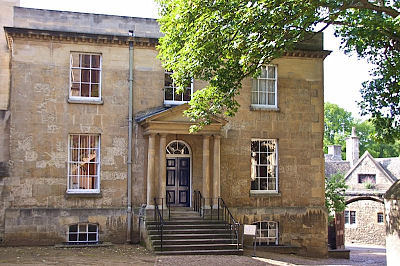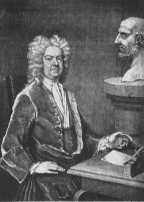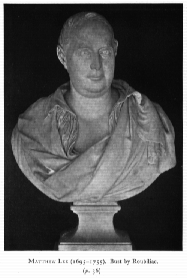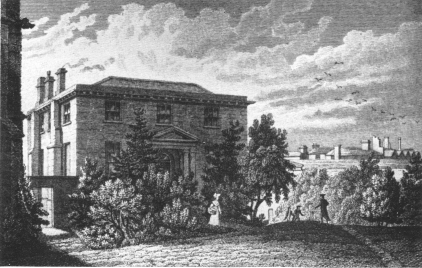The Lee Benefactions and the origins of the Christ Church Science Laboratory


In 1546 Henry VIIIth created five Regius Chairs in the University, one of which was in Medicine but it was not until 1st October 1624 that one "Richard Tomlins of the Citty of Westminster Esquier" did "found constitute and ordayne an Anatomye Lector to be for ever read and performed in the said Vniversitie" - this was the Tomlins Readership in Anatomy which was attached to the Regius Chair. The first Reader was especially chosen and nominated by Tomlins as "his worthy friend Thomas Clayton" who held this position (and the Regius Chair) until 1643.
As early as 1549 medical undergraduates in Oxford
had been required to study for six years and to witness at least two dissections
before they were entitled to a B.A. degree, and they were then required
to perform at least two dissections themselves and to prove that they
had effected at least three cures before they could practise medicine.
Such requirements were established by Edward VI's Visitation of the University
of Oxford (1549) which led to rejection of existing Statutes, the Visitors
being given sweeping powers for the drawing up of new Statutes and even
the right to assign one College solely for the study of medicine. And
so for the first time a student had to see and to perform dissections
on a human body.
This led to the problem of procuring corpses! Every
spring after the Lent Assizes the Reader had if possible to procure "
a Sounde body of one of the Executed persons". For obvious reasons
(!) nothing happened in the summer, and in the Michaelmas Term, when the
Assizes did not occur, the Reader lectured on "the Sceleton or History
of the bones with theire Scituation Nature and Office". Lectures were
given in the Anatomy School (part of the Bodleian Library) until they
were transferred to the Ashmolean Museum in 1683.
Clayton demonstrated Anatomy in the manner carefully prescribed by Tomlins. For these duties he received £25 per annum from which he paid £3 to the Chirurgion (the surgeon who assisted him) and £2 for the collection and subsequent "decent buriall of the body and all the necessaries therevnto". After Clayton the Tomlins Readership in Anatomy had to be held forever by the Regius Professor of Medicine.
The supply of bodies was helped by the Charter of Charles 1st (1636) which permitted the Reader to demand the body of any person executed within twenty-one miles around Oxford.
In 1730 a riot almost occurred over a body for dissection:
"Hanged at Oxford, one Richard Fuller of Caversham in Oxfordshire, a young man of 26 years of age for murdering his wife. There was sad work on that occasion, the Scholars endeavouring to get the body, assisted by some Townesmen and others on the contrary hindering. The Relations had provided a coffin to have it decently buried at Caversham but the Scholars broke it all to pieces, the body being in it; after which those opposite to the Scholars had it again and so for several times, sometimes one side had it and sometimes the other, but the Proctors favouring the Relatives, the body was at last delivered to them and brought to the Castle; about eleven at night when all was thought still, it was taken to the water side to send it away in a Boat, but to their surprise, the Scholars were lying in Ambush and coffin and all was thrown into the water, but the Scholars soon went in in great numbers and drew it out and carried it to Christ Church to dissect it. the Tumult was so extraordinary that the Town Clerk was forced to read the Proclamation but to no purpose, the Rioters crying out they did not hear it."from T. Hearne, Remarks and collections, 1705-1735. 11 vols. (Oxf. Hist. Soc.). 1884-1918.
In the latter half of the 17th century number of famous figures made important contributions to the study of Anatomy. Christopher Wren (1632-1723) is reported to have "compos'd a Treatise of the Motion of the Muscles, explaining the whole Anatomy by Models form'd in Pasteboards" and Robert Boyle (1627-91) introduced the present practice of preserving moist specimens in alcohol reporting that: " for the preservation of a humane body ...we have for curiosity sake, with this spirit [of wine], preserv'd from further stinking, a portion of fish, so stale, that it shin'd very vividly in the dark".
The end of the 17th century saw a rapid decline of medical science in Oxford. The Royal Society was flourishing and the best men were attracted to London. The eighteenth century saw the Regius Professors uninterested in carrying out their duties as Tomlins Readers, the teaching of Anatomy being left to their deputies and other unofficial teachers.
It is thought that the creation of the laboratory had originally been suggested by John Freind, physician to Queen Caroline, who gave a course in Chemistry in 1704.


Matthew Lee was educated at Westminster School and then studied at Christ Church. He subsequently practiced Medecine in Oxford and London and was physician to Frederick, Prince of Wales. His will provided a substantial sum (ca. £2300) for a building, a Readership and running costs (the costs of supplying bodies for dissection). The little Georgian building, originally known as the Anatomy School, was erected in the School Quadrangle, tucked away to the south of the Hall. It was designed and built at a cost of £1200 in 1766-7 by Henry Keene on the site of the organist's house and became the Christ Church science laboratory.

Subsequently the "Lee Building" was used as a picture store but it is now part of the Senior Common Room.